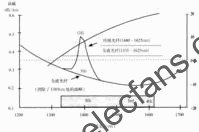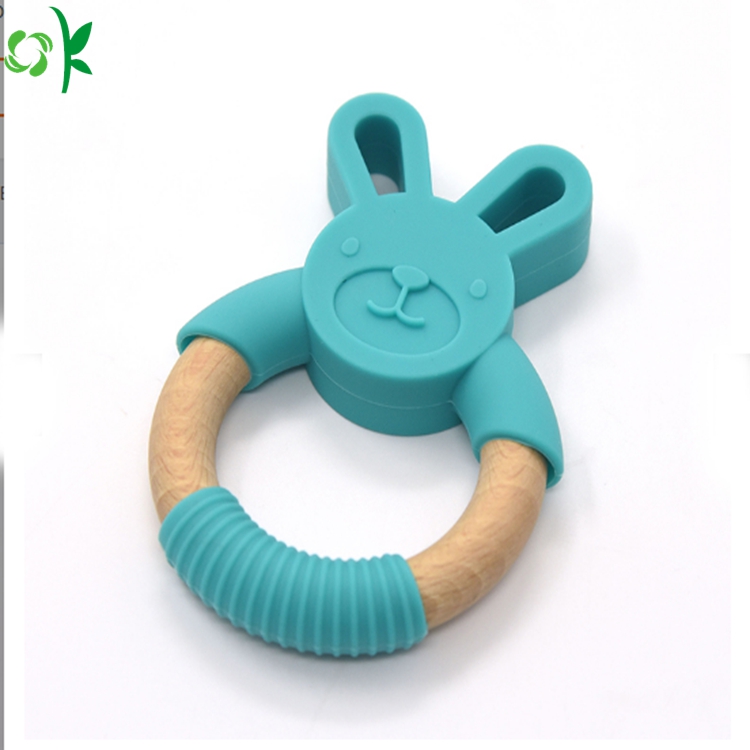Overview
The full-wave fiber ALL-wave? Fiber invented by Lucent eliminates the loss peak caused by OH ions in the conventional fiber near 1385nm, and the loss is reduced from the original 2dB / km to 0.3dB / km, which makes the fiber loss at 1310nm ~ 1600nm tends to be flat. Its owner

The main method of full-wave optical fiber is to improve the manufacturing process of optical fiber, which basically eliminates the moisture introduced in the optical fiber manufacturing process. The full-wave optical fiber increases the available wavelength of the optical fiber by about 100 nm, which is equivalent to 125 wavelength channels and 100 GHz channel spacing. The loss characteristics of full-wave fiber are very attractive, but it has no outstanding performance in terms of dispersion and nonlinearity.
The development of metropolitan area networks with multi-service access and wide bandwidth as main features requires the development of optical fibers with the widest available band. Full-wave fiber is a new type of single-mode fiber that can meet the above requirements.
Origin of the name
The conventional single-mode fiber can be used for communication in two "windows" (the so-called "window" is the band with the lowest optical loss): In the 1980s, when people began to use single-mode fiber, they believed that the wavelength was around 1310 nanometers The band is the best, and the usable range is about 1260 nanometers to 1360 nanometers, which is a window; by the early 1990s, a 1550 nanometer laser was produced and used as a light source for optical fiber communication. Communication, not only has the lowest optical loss in this band (0.2 dB / km), but also has a wide window (from 1510 nm to 1610 nm), which is beneficial to the installation of wavelength division multiplexing system and can further expand the transmission capacity of optical fiber communication. As a result, the focus of fiber optic communication applications has moved to this window. In the 1990s, most optical fiber communication systems worked in this band. There is a band of 1385 nanometers between the two windows of 1310 nanometers and 1550 nanometers, which is from 1360 nanometers to 1510 nanometers. Due to the large optical loss, it has been considered unusable.
The main reason for the large loss around 1385 nanometers is that in the manufacturing process of optical fiber, some 0H ions and metal impurities are mixed, which will produce vibration absorption under the action of electromagnetic field, causing additional attenuation. Among them, the influence of 0H ion is the most serious. The end result is that a water absorption peak is formed around 1385 nanometers with a loss about 0.5 to 1 dB higher than the surrounding. Obviously, if this absorption peak can be eliminated, the available frequency band of the fiber will be widened. Full-wave optical fiber is a new type of optical fiber that adopts a new production process to eliminate almost all residual 0H ions.
The full-wave fiber reduces the optical loss of the band that was originally considered unusable, and opens the gap between the two windows to form a wide window, so that the entire band from 1335 nanometers to 1625 nanometers can be used, so The new window after opening is called "full wave window" (see Figure 1). An optical fiber with a full wave window is called an all wave fiber.
Features
Brief description
Compared with the currently widely used single-mode fiber, the full-wave optical fiber can greatly improve the transmission capacity of the system. By using this optical fiber and using wavelength division multiplexing (WDM) technology, the transmission rate of the optical communication network can be increased from the current Gbit / s (Gbit / s) level to the terabit / s (Tbit / s) level .
The full-wave fiber can provide an effective wavelength band that exceeds 100 nanometers than the current single-mode fiber, which is at least 1.6 times the band used by the conventional fiber. The full-wave fiber is a matched cladding fiber, and its performance in the 1310nm and 1550nm bands is exactly the same. But compared with the traditional single-mode fiber, the full-wave fiber also has its unparalleled advantages; more wavelengths: the full-wave fiber can provide a complete transmission band from 1280mn-1625nm for the DWDM system, at least the length of the conventional fiber 60%. The full-wave fiber eliminates water peak loss and opens a window of 1340nm to 1440nm that was not available before. This allows service providers to provide high-speed data services with full-wave fiber, such as multimedia, Internet and VOD, and on-demand TV. There is a longer non-dispersion compensation distance for high-speed transmission: First, in the 1400nm band, the dispersion of the full-wave optical fiber is only half of that of the conventional fiber in the 1550nm band, which allows the signal to be uncompensated. The full-wave fiber not only provides more lengths, but also has a small dispersion in the 1400nm region for high-speed signals (10G / s). With full-wave fiber, the dispersion-free distance of 10Gb / s signal in the 1400nm region can be more than 2 times longer than that of the conventional fiber in the 1550nm window. Multiple services exist on one fiber at the same time: Full-wave fiber can simultaneously transmit analog signals in one area of ​​the fiber band, high-speed information (up to 10Gb / s) in another band, and low-rate DWDM in another band information. Full-wave optical fiber provides the best solution for the local network design of cities under the current exponential increase in bandwidth demand. It is a powerful and highly flexible optical fiber product that adapts to the present and future.
The biggest advantage
The biggest advantage of full-wave optical fiber is that it greatly widens the bandwidth of optical fiber communication. It can provide 100 nanometers more bandwidth than the original single-mode fiber. If the current wavelength standard interval of wavelength division multiplexing is 0.8 nanometers (it may be reduced to 0.4 nanometers), it can add 125 more channels; With a transmission rate of 10 gigabits per second, a total of 125 channels can be added.
In addition, the optical fiber communication system with multiple wavelengths can have more wavelengths to choose from, which can adapt to the needs of multiple services; it is more conducive to the realization of all-optical networking, using one wavelength as a channel to perform all-optical routing. Since the full-wave fiber is also a single-mode fiber and the existing single-mode fiber has many of the same characteristics, it is completely compatible with the existing optical fiber system, and the existing optical fiber communication equipment can continue to be used, which is its promotion. The application creates an important condition.
Product Standards
In April 2000, in order to adapt to the latest progress of optical fiber product technology, ITU (International Telecommunication Union) made a large-scale revision of the G.652 single-mode optical fiber standard, which was officially finalized in October, corresponding to the IEC (International Electrotechnical Commission) Classification number B1.3, ITU-T defines "full-wave fiber" as G.652c fiber, which is mainly applicable to the SDH transmission system specified by ITU-T G.957 and the single-channel SDH with optical amplification specified by G.691 The transmission system and the ITU-T G.692 wavelength-division multiplexing transmission system with optical amplification up to STM-64 (10Gbit / s) usually require wavelength dispersion adjustment for high-speed transmission in the 1550nm wavelength region.
With reference to the latest optical fiber classification standards of IEC and ITU, China has revised GB / T9711-1998 "Single-mode optical fiber series for communication", and officially named it as "Non-dispersion shift of wavelength extension" in GB / T 9771.3-2000. "Single-mode fiber", the new national standard will be implemented from June 1, 2001.
application
The emergence of full-wave fiber reduces the loss at the water peak from the original 2dB / km to less than 0.31dB / km, and the loss of the fiber tends to be flat in the 1310nm-1600nm wavelength range. It is estimated that this technology can make The available wavelength of the optical fiber is increased by about 100 nm, which is equivalent to 125 wavelength channels (100 GHz channel interval). Therefore, the full-wave optical fiber provides a better solution for the construction of the metropolitan area optical fiber network, because the communication distance of the metropolitan area network generally does not exceed 80km, and there are many add / drop devices along the way, there is no need to pursue small fiber attenuation, and rarely need Fiber amplifiers, in addition, because full-wave fibers are most suitable for coarse wavelength division multiplexing (CWDM), can provide higher bandwidth, and because of the channel spacing of about 20nm, the requirements for filter and laser stability are relaxed, thus Greatly reduced costs. In addition, the emergence of full-wave optical fibers has provided greater flexibility for multiple communication services using a single optical fiber. For example, it can be simultaneously opened on the same optical fiber for use in wavelength division multiplexing (WDM) in the second band Analog video, high-bit (10Gbit / s) data transmission in the 1350-1450nm band (the fiber dispersion is very small in this band), and dense wavelength division multiplexing (DWDM) above 2.5Gbit / s in the 1450nm band data transmission. Therefore, it is foreseeable that the construction of metropolitan area networks in small and medium-sized cities will use this kind of optical fiber in large quantities in the future.
About Baby teether
Why do babies need to use a teether?
Because the baby's gums will be itchy during the growth of the baby's deciduous teeth. The lleviate the discomfort of the baby during the growth of the deciduous teeth. It not only relieves gum discomfort, strengthens the gums, aligns the teeth after avoids dislocation of the teeth, and exercises the baby's grasping ability and chewing ability. As the teeth grow, babies can improve coordination between their hands and feet by sucking and chewing their teeth, It can promote the development of intelligence ; When the baby is frustrated and unhappy, tired and wants to sleep or loneliness, he will also get psychological satisfaction and security by sucking the pacifier and the teether. More importantly, the food-grade silicone molars are non-toxic and odor-free, safe and environmentally friendly, The baby is very happy to use it, and the mother can buy it with confidence.
Product introduction:
1.Product name: Silicone Teether ,Silicone Baby Teether,Silicone Teether Animal,Food Grade Silicone Teether, Silicone Teether Toy ,Bear Silicone Teether2.Place of origin:Guangdong China
3.Color:any pantone color
4.Logo:printing,debossed,embossed
5.MOQ:500pcs.
6.Package:1 pcs/opp,customized design is available.
7.Design:Customized/stock
8.Certification:FDA,LFGB,SGS,ROHS,etc.
9.Usage:exersise baby's chewing
10.Silicone baby teether photos for reference.

Silicone Teether
Silicone Teether,Silicone Baby Teether,Silicone Teether Animal,Food Grade Silicone Teether,Silicone Teether Toy,Bear Silicone Teether
OK Silicone Gift Co., Ltd. , https://www.oemsiliconegift.com